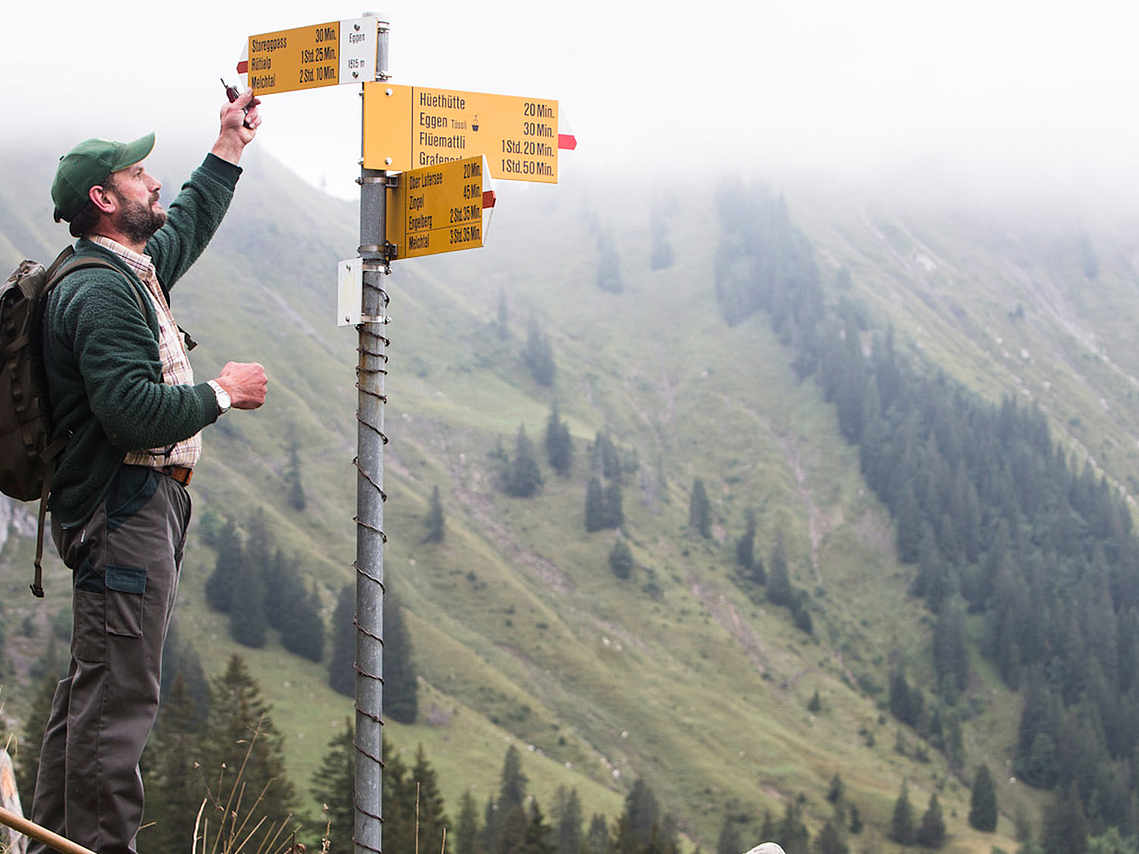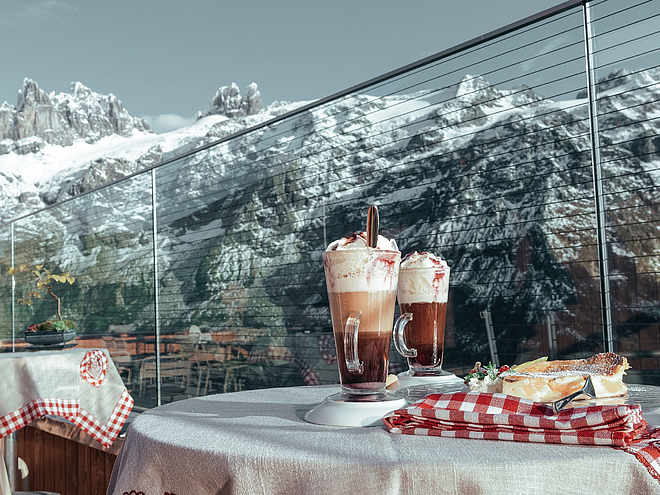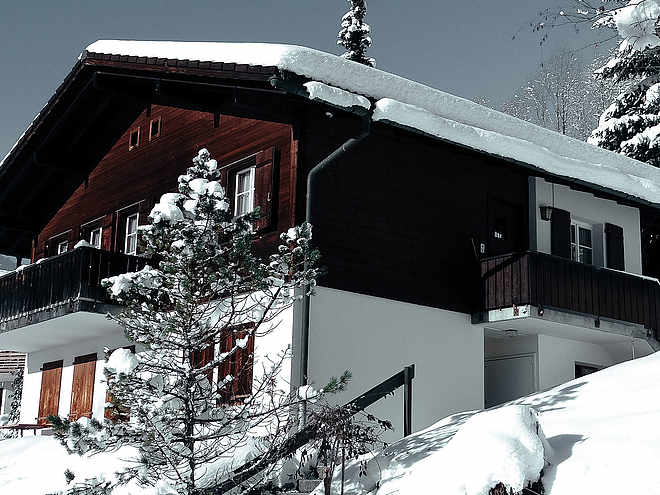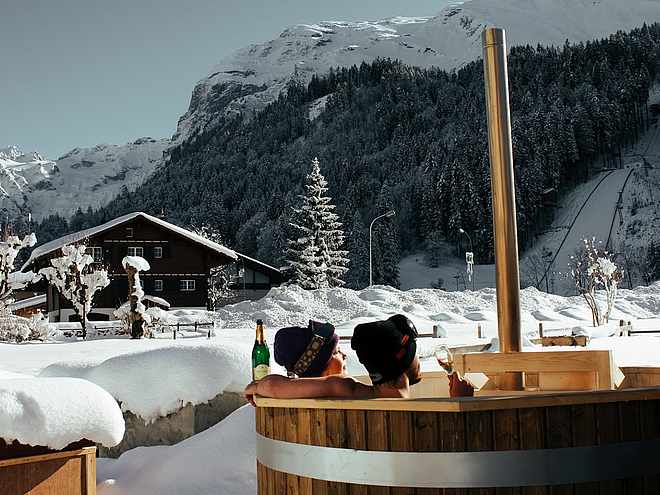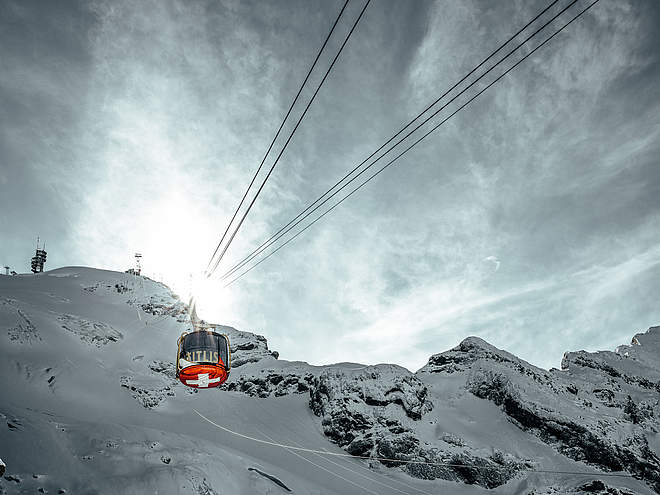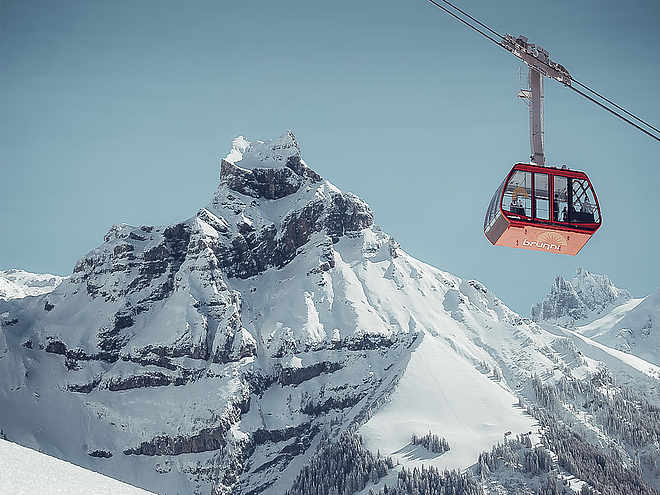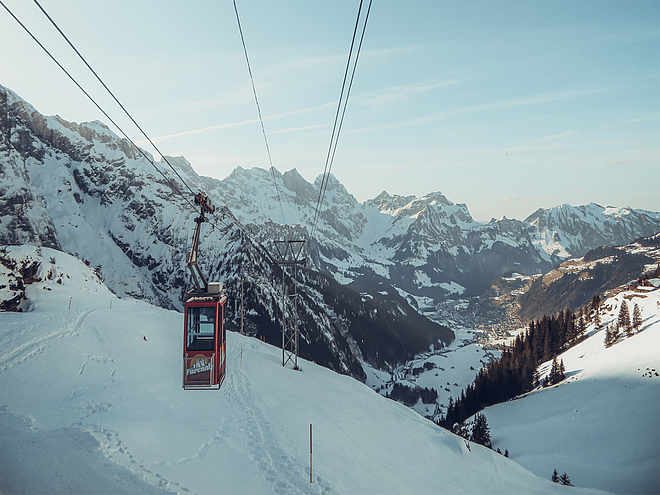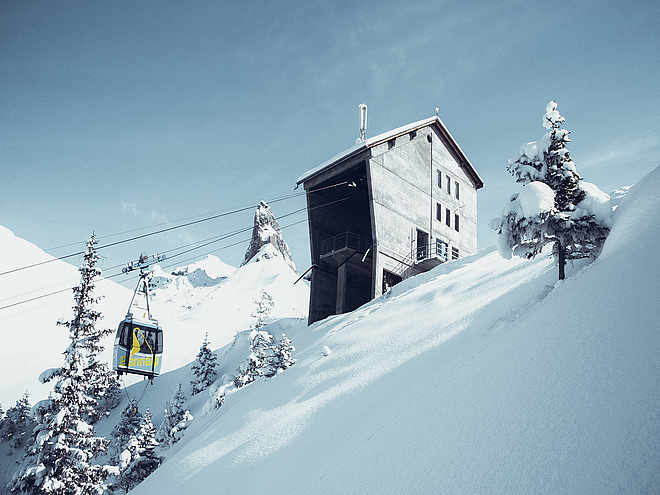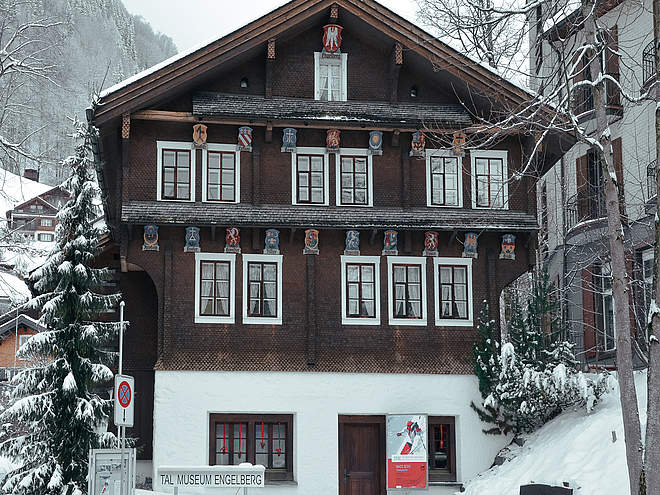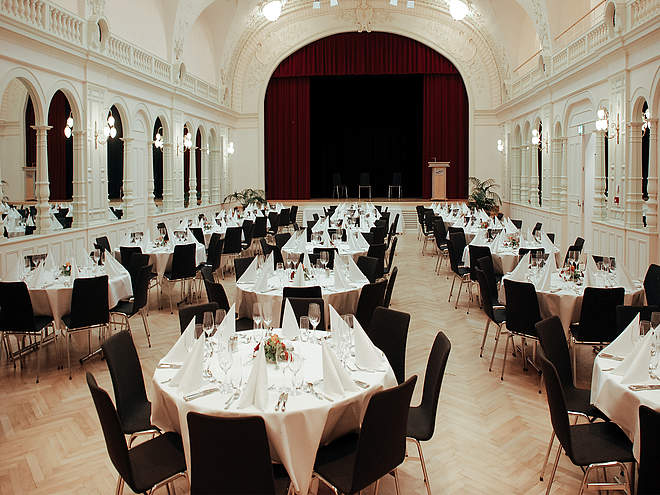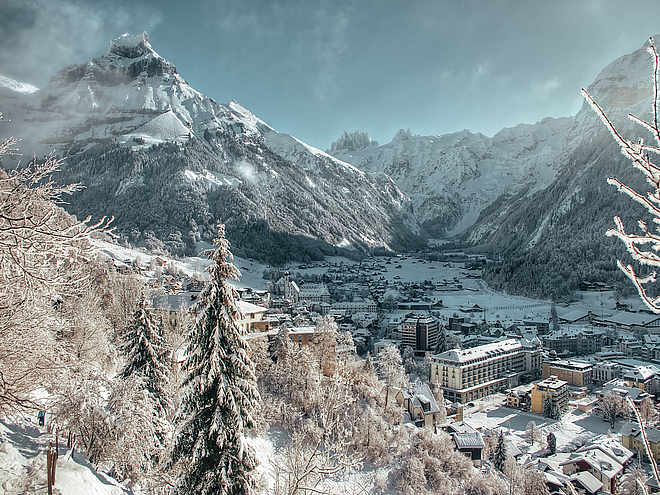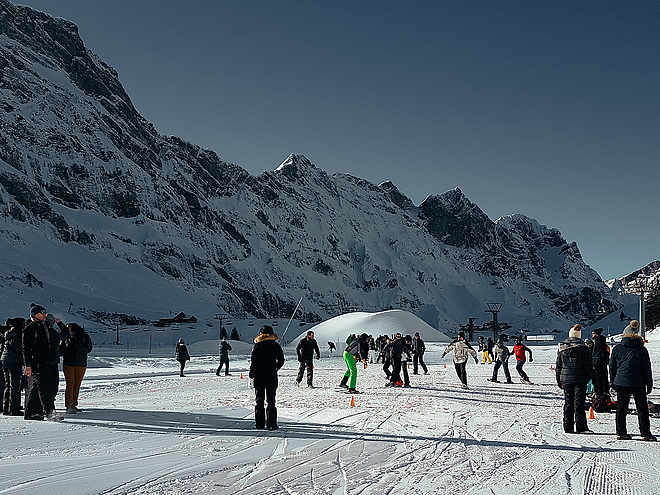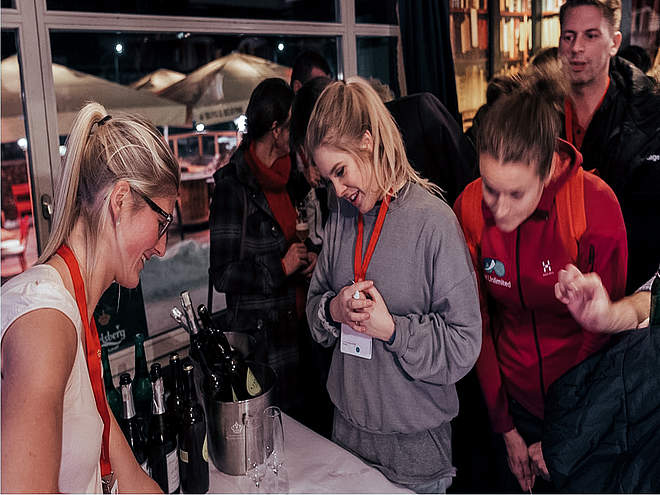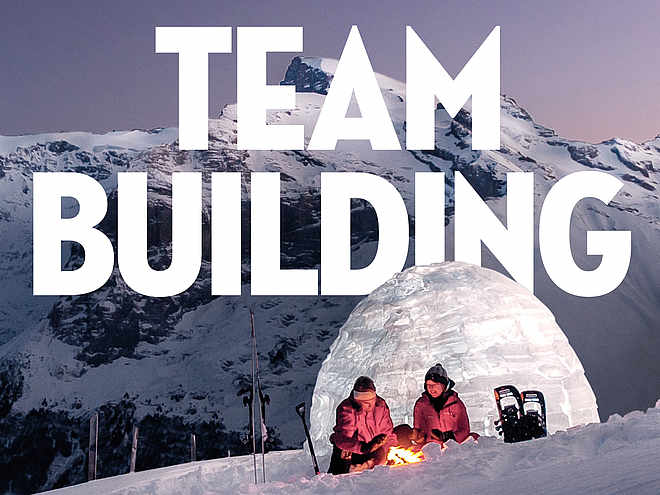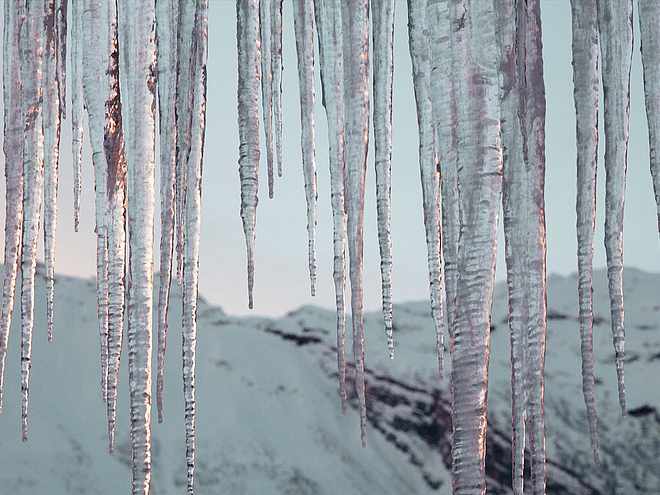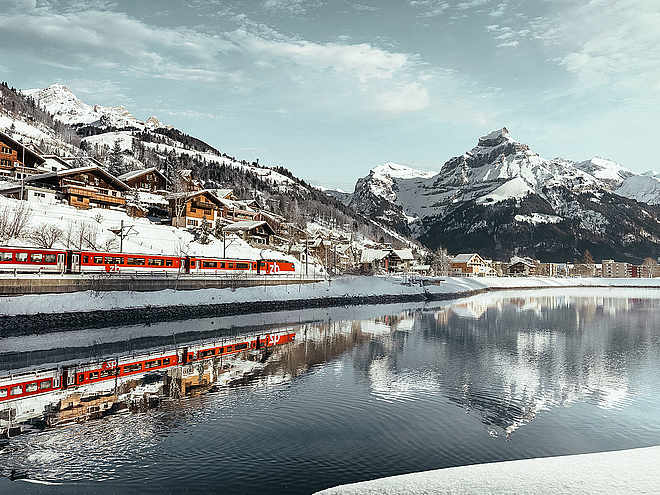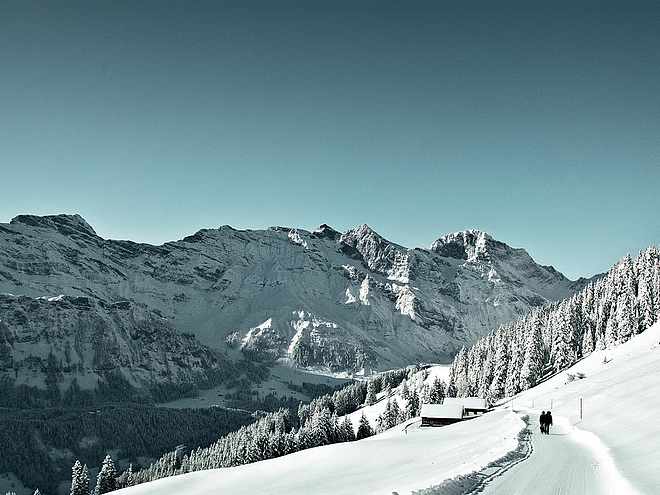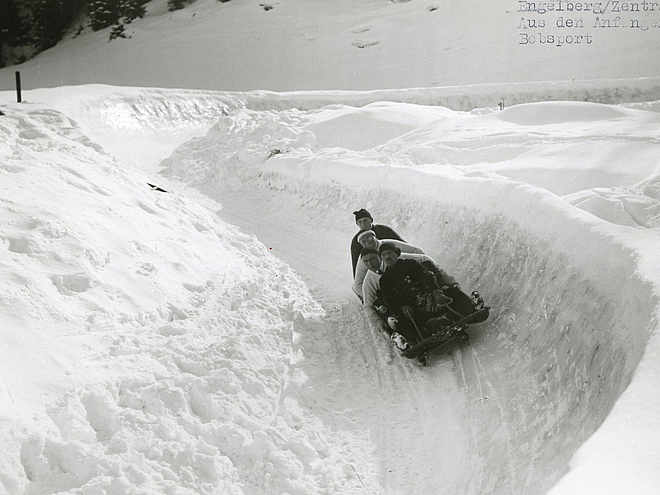Between Obermatt and Untertrübsee and the other thirty or so destinations, it almost went unnoticed in the forest of signs. But this path along the Eugenisee via the Aaschlucht gorge to Grafenort is not only one of the most beautiful in the monastery village, at the same time a cloud full of energy, commitment and closeness to nature hovers over it. But everything in turn.
If we had ventured on this hiking route before the 20th century, we might have disappeared somewhere in the middle of nowhere. We looked in vain for signposts; good map knowledge was indispensable. At that time, the wandering nature scholars and the summit-climbing English were still smiled at, but the need to trudge through wild nature grew more and more around 1900. Suddenly, signposted hiking routes were springing up like mushrooms in all kinds of places - and at some point no one had an overview of the uncontrolled growth. The chaos of markings called for order. The umbrella organisation Swiss Hiking Trails was founded in 1934 and the yellow signs with black lettering were born. But no sooner were they installed than all the signs disappeared again. The reason: the Second World War - no one wanted to offer the invading enemy an orientation aid. The signposting project was put on ice for the time being. On the other hand, the guided hikes were started - and because of their great popularity they have remained until today.
When the war ended and the signboards were reinstalled, the second problem followed: the road network spread like a blanket over the entire country and many hiking trails were tarred, thus obliterating hard-won paths. This resulted in a law that is unique in the world. Since 1979, hiking trails have been regulated in the Federal Constitution and since 1987 in the Federal Law on Footpaths and Hiking Trails. Thanks to this basis, hiking trails in Switzerland can no longer be asphalted at will.
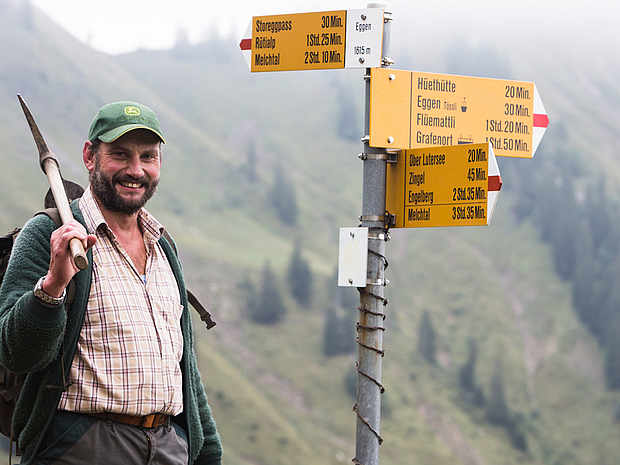
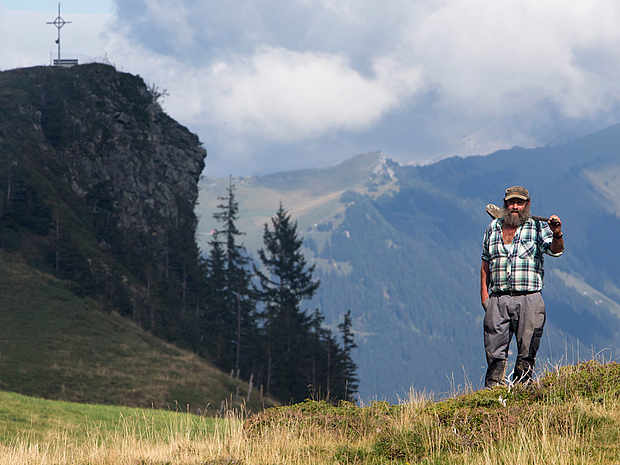
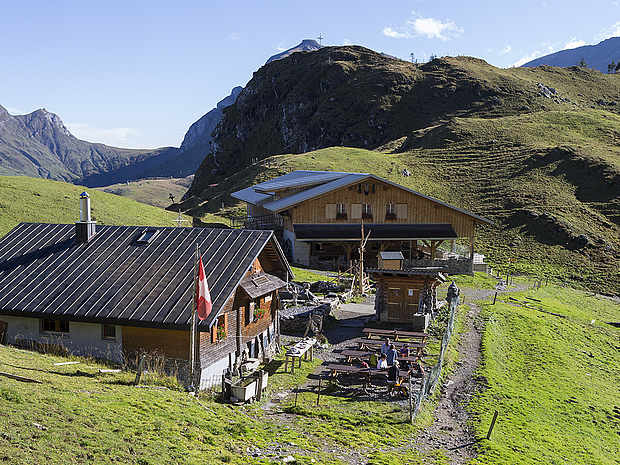
With the uniform signposting throughout Switzerland and the legislation, an important foundation stone was laid; the maintenance, however, remained the responsibility of the cantons or municipalities - until today. And so we are back at the signs at the station. This is where Patrik Emmenegger's work begins. You rarely see him without his hiking boots, hiking trousers and a good jacket. He is young and has been responsible for the hiking trails in Engelberg for seven years as district manager, marking, checking and maintaining them. He smiles, radiates satisfaction - "that comes from the work," he says. Nature gives him a lot: he feels good there, it gives him energy and there is enough to do. There are 100 kilometres of hiking trails in Engelberg, but the work extends across the border into the neighbouring municipality of Wolfenschiessen. He often meets with the local area representative Sepp Hurschler, although the organisation works differently across the border. Hardly any other municipality is organised in the same way as Engelberg. Patrik Emmenegger and two other colleagues are permanently employed by the municipality and are exclusively responsible for the hiking trails. Elsewhere there are cantonal organisations, tourism associations or the hiking trails are maintained by volunteers.
Here, then, at the Engelberg railway station, a working day could begin. In spring, when the white blanket of snow slowly melts away under the warm rays of the sun and nature awakens from hibernation, preparations for the upcoming hiking season begin at lower altitudes and move upwards as the snow melts. Just as fox and hare change to summer fur, the signs change from pink winter to yellow summer hiking trails. Some even get a white-red-white or white-blue-white coat of paint to distinguish them from the mountain and alpine hiking trails. The nature boys busily walk the paths like ants, placing benches in the right places, attaching hand ropes and rebuilding smaller bridges. Yes, that's right, because in winter almost everything is cleared away, for safety's sake.
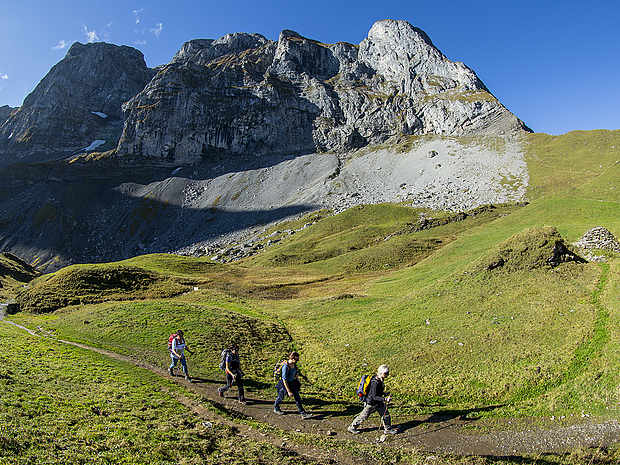
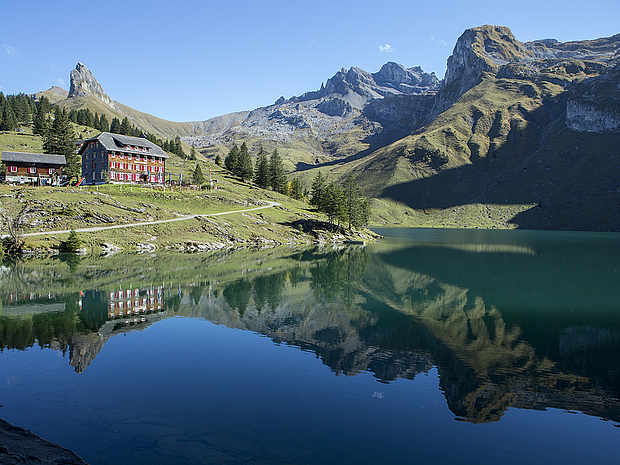
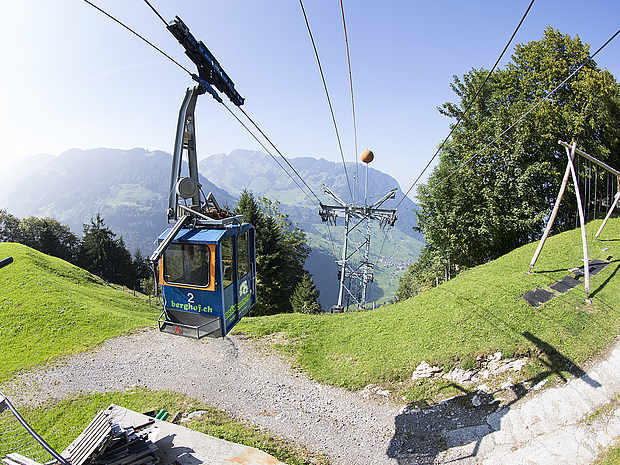
However, Patrick Emmenegger and his colleagues depend on volunteers to control such a large network of paths. For example, hiking trail goddesses watch over the paths, reporting if fallen trees or stones block the path or if too much water makes it impassable. Without them, the path to Grafenort over the thundering waters of the Aasch Gorge would probably no longer exist. When heavy rains hit Switzerland in the summer of 2005, Engelberg was not spared. The torrential mud floods of the Engelberger Aa destroyed the road at the entrance to the village and thus the hiking trail to the Aaschlucht. Since the canton and the municipality could not raise enough money for the renovation, the Aaschlucht adventure trail interest group was formed. Sepp Hurschler, retired but fit, was one of the members. He really blossoms during the stories; there is a lot of enthusiasm in his voice. "It was incredible," he says. More than thirty volunteers invested countless hours to renew the path and, thanks to the Fritz-Carl-Wilhelm Foundation, to repair nine stone, metal and suspension bridges and partly to construct new ones. In 2011, the time had come: the IG handed the path back to the municipality and disbanded; the silent brownies devoted themselves to new tasks.
The passion for nature and the experience there - this accompanies Patrik Emmenegger and Sepp Hurschler in their work every day. For example, Patrik Emmenegger has been working for a long time on the digitalisation of maps and the comparison of local, regional and national routes. For the user, the hiking trails should remain as clear as possible. "It's no use if seven paths lead to Rome; they want the most beautiful and attractive one," he says. By the time the revision is completed, however, it will probably be autumn - and the two are looking forward to that. Autumn is the best season. When the main work is done, when it's no longer so hot, the fallen leaves crackle under the shoes, the alps are empty and nature prepares for winter. Then the nature boys also cut back and there is more time for hunting and for observing, listening and enjoying. And once again to hike along the thundering waters of the Aa - in peace and quiet.

